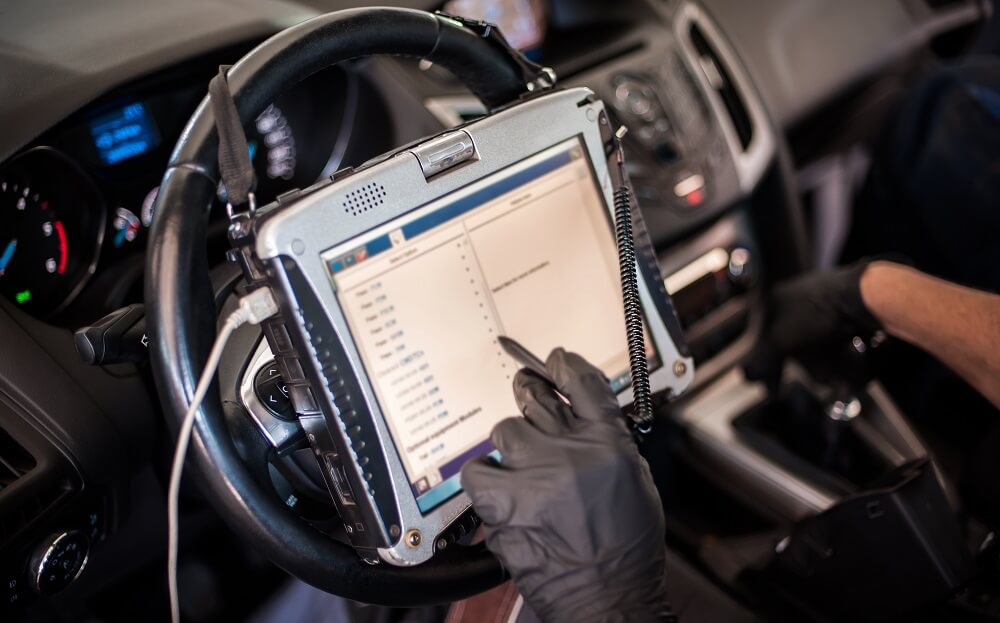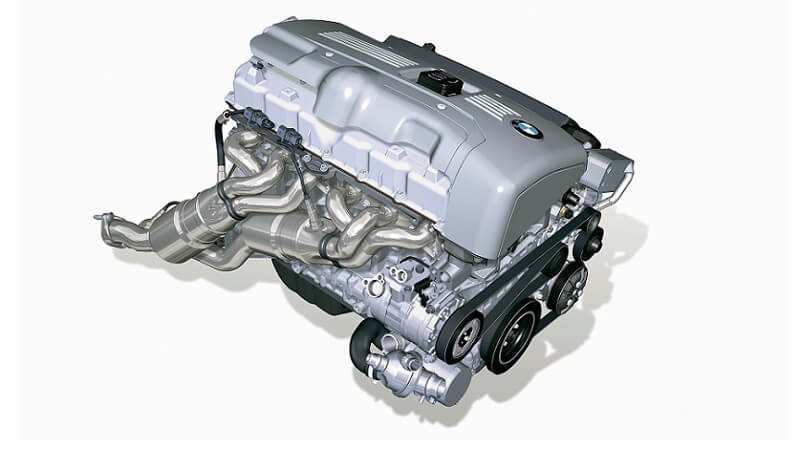The Evaporative Emission Control System (EVAP) is a government-mandated part of modern-day cars which prevents gasoline vapors from the tank or other parts of the fuel system from escaping into the atmosphere. BMWs have featured this tech since 1998, and a problem in the system has left thousands of owners wondering if there’s something seriously wrong with their car.
Why? Mainly because an EVAP system leak will always trigger the check engine light on your dashboard, and as you can imagine, this can cause quite a bit of worry. However, a leak in the EVAP system is seldom accompanied by any other severe symptoms and won’t affect your engine or performance.
Nevertheless, it is something that you should get rectified at the earliest.

What is an EVAP System?
As we just mentioned, the EVAP system ensures that fuel vapors don’t leak into the atmosphere. It does so by collecting vapors in the fuel system and reintroducing them into the combustion chamber under the right conditions.
Since the technology was first introduced, it has seen multiple iterations, including Leak Detection Pump (LDP) systems, Evaporative System Integrity Monitor (ESIM), and Natural Vacuum Leak Detection (NVLD) systems. Today’s EVAP systems can also monitor efficiency and alert the owner of a leak.
Parts of An EVAP System
Several components are involved in a modern-day EVAP system, each integral to its proper functioning.
Leak Detection Pump (LDP)
BMW cars use a Leak Detection Pump (LDP) in their EVAP systems. The LDP consists of a diaphragm moved up and down by a solenoid actuated by an engine vacuum. The movement of the diaphragm is affected by the pressure stored within it.
The car’s ECU is constantly monitoring this diaphragm movement and compares its frequency to specific preset values to identify if there is a leak.
Fuel Tank
The fuel tank holds gasoline or diesel and their vapors. Modern-day fuel tanks come with a sensor that measures the pressure within the fuel tank to check if there’s a leak.
Gas Cap
The gas cap may come across as a simple piece of plastic, but it’s arguably the most common reason behind an EVAP system-related error code. Gas caps have seals that keep vapors and pressure from exiting the system. If a gas cap isn’t closed correctly, the EVAP system will read a drop in system pressure and throw up an error code.
If you find yourself dealing with an EVAP system leak, try replacing the gas cap before moving to more severe intervention or repairs.
Charcoal Canister
The charcoal canister is a small box filled with activated charcoal that traps fuel vapors. Under the right conditions, these vapors are sucked out of the canister and reintroduced into the combustion chamber to be burnt, reducing tailpipe emissions and wasted fuel.
Canister Purge Valve
The canister purge valve is the component that triggers the trapping or release of vapors from the canister. It is essentially a solenoid that opens up fuel vapor lines under an electric current administered by the ECU.
How Does an EVAP System Work?
The EVAP system prevents vapors from escaping the fuel tank and, in the case of BMW cars, relies on the LDP to assess if there’s a leak. The LDP only runs when the engine has been turned on or off and not when it’s running. That’s why you’ll only see an EVAP system leak-related code when you turn the car off and on and not when the engine is running. You should also know that an EVAP system will not spot liquid leaks.
When the fuel evaporates from the tank, it is carried by fuel lines to the charcoal canister. Under the right conditions, the ECU triggers the canister purge valve, which allows these trapped vapors to be released back into the combustion chamber where they are ignited, reducing the release of unburnt fuel through the tailpipe.
What Happens When There’s an EVAP Leak?

An EVAP system comprises multiple parts, and the failure of any one of them can trigger the check engine light. Other symptoms are highly unlikely, but a more severe leak may be accompanied by the odor of fuel inside the cabin.
As we mentioned above, the most common cause of an EVAP system leak Diagnostic Trouble Codes (DTC) is a loose fuel cap. If you see the check engine light come on and have double-checked that the fuel cap is sealed, you should consider having your vehicle looked at by a technician. If you have an OBD-II device, you can also plug it in and check for errors related to the EVAP system.
Some of the more common EVAP system leak codes are:
- P0456 — Evaporative Emission System Leak Detected (Very Small Leak)
- P0442 — Evaporative Emission Control System Leak Detected (Small Leak)
- P0455 — System Gross Leak Evaporative Emission (Large Leak)
- P0457 — Evaporative Emission System Leak Detected (Loose Fuel Cap)
- P2402 — Evaporative Emission System has a High Voltage Signal Return
- P0441 — Evaporative Emission Control System Incorrect Purge Flow
- P0440 — Evaporative Emission Control System Malfunction
Can I Drive My BMW If It Has an EVAP Leak?
Yes, you can still drive your BMW even if there is a leak in the EVAP system. This is because it does not play a role in the normal functioning of the engine. However, an EVAP leak means that you are exposing the planet to harmful hydrocarbons. A fault with the EVAP system will also disable your car from passing an emissions test, so you might run into trouble with the law if you don’t get it rectified as soon as you can.
What Can Cause an EVAP System Leak?
Multiple factors may cause an EVAP system leak. Some of them include the following.
Leak Detection Pump Failure:
The leak detection pump includes smaller parts like a vent valve, diaphragm, vacuum solenoid, sensor, and multiple one-way valves. If any of these parts fail, you’ll likely have to replace the entire pump. In such a case, you should stick to a reliable OEM product, even if an aftermarket one is costing you less.
We’ve found that the Bosch 261222018 Self-Diagnosing Module is an OEM option that thousands of Bimmer enthusiasts have opted for after their factory LDP has failed. Other leak detection pumps can be found here as well.
Gas Cap
If the seals on the fuel cap are worn out, it will not help maintain pressure within the fuel tank, which can trigger the check engine light. Check out our fuel cap options.
Saturated Charcoal Canister
The canister is filled with activated charcoal that can lose its property of holding fuel after time. This typically takes several thousand miles, but it is something that will likely have to be replaced at some point in the life of a car.
Purge Valve Solenoids
The canister purge valve solenoids are one of the more common reasons behind an EVAP system leak. Typically, two are present in the car — one near the engine and the other near the canister. They can be stuck in the open or closed position when they wear out, affecting the pressure build-up and triggering the check engine light.
Are EVAP Leaks Difficult to Fix?
Depending on which part of the system is affected, EVAP system leaks can be pretty straightforward to fix. The best way to find out what needs to be replaced is to check the system using an OBD-II scanner.
In most cases, the complexity of fixing an EVAP leak simply comes down to accessibility — some components of the system can be a little tricky to reach — and having the right tools can make the job a lot easier if you’re doing it yourself. This is why you’ll find that the labor cost usually turns out to be more than the cost of the replacement part if you’re having someone else fix the problem.
Find Parts that Best Match Your Vehicle!
Irrespective of which part of an EVAP system you’re looking for, from a leak detection pump to a charcoal canister, it’s always recommended that you stick to OEM parts that are reliable and will last for years on end. We’ve built our catalog to provide you with the largest selection of such genuine, quality components. Head over to the shop section on Bimmers.com, input your car’s data, and search for the part you need!





